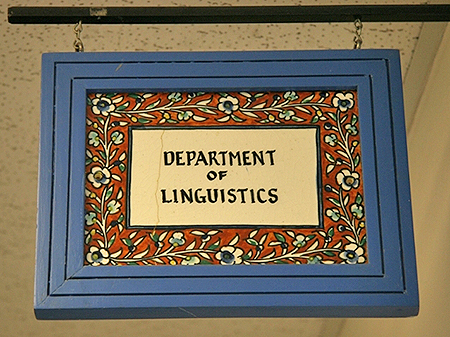
Linguistics ETDs
Publication Date
12-1-2009
Abstract
Non-native speakers of English often experience problems in pronunciation as they are learning English, many such problems persisting even when the speaker has achieved a high degree of fluency. Research has shown that for a non-native speaker to sound most natural and intelligible in his or her second language, the speaker must acquire proper prosody, such as native-like speech rhythms (Tajima et al., 1997; Wenk, 1985; Wennerstrom, 2001). This dissertation investigates how native English and Spanish ESL (English as a Second Language) speakers compare in their production of three acoustic correlates of lexical stress in English, namely the relative durations of stressed and unstressed vowels and their relative intensities and fundamental frequency (F0) values. A set of three-syllable words, including cognates and non-cognates, was analyzed. The results from the production study were used to design a listening task that investigated how the ESL speakers varying productions of these acoustic cues affected native English listeners' perception of their speech intelligibility and nativeness. The ESL speakers produced a wider range of values than did the native speakers for all three acoustic correlates. The ESL and native speakers differed statistically in their productions of Spanish/English cognates with different stress patterns in each language and often differed on non-cognates. The ESL group produced the most native-like patterns in cognates with the same stress pattern in each language. The stimuli for the listening task were words recorded by native English participants and subsequently modified to emulate the production of the acoustic correlates of lexical stress by the ESL speakers. Listeners' ratings of speech intelligibility were statistically higher for words in which intensity was increased on the vowel that is expected to receive lexical stress compared to the adjacent unstressed vowel. Increasing vowel duration on the unstressed vowel led to statistically lower ratings of both intelligibility and nativeness. This dissertation contributes to a small body of research regarding the production of prosody in second language speech. The results suggest that a speaker's prosody alone can influence a native listener's perception of speech intelligibility and nativeness.
Language
English
Keywords
ESL, prosody, phonetics, acoustic correlates, second language acquisition
Document Type
Dissertation
Degree Name
Linguistics
Level of Degree
Doctoral
Department Name
Department of Linguistics
First Committee Member (Chair)
Neel, Amy
Second Committee Member
Morford, Jill
Third Committee Member
Scherba de Valenzuela, Julia
Recommended Citation
Edmunds, Paul. "ESL speakers' production of English lexical stress: The effect of variation in acoustic correlates on perceived intelligibility and nativeness." (2009). https://digitalrepository.unm.edu/ling_etds/10

Comments
Submitted by Paul Edmunds (pedmunds@unm.edu) on 2009-11-09T22:32:07Z No. of bitstreams: 1 Dissertation_final_Edmunds.pdf: 1368273 bytes, checksum: 292e17bbab218627760a391a4f64da60 (MD5), Approved for entry into archive by Doug Weintraub(dwein@unm.edu) on 2010-02-09T23:17:02Z (GMT) No. of bitstreams: 1 Dissertation_final_Edmunds.pdf: 1368273 bytes, checksum: 292e17bbab218627760a391a4f64da60 (MD5), Made available in DSpace on 2010-02-09T23:17:03Z (GMT). No. of bitstreams: 1 Dissertation_final_Edmunds.pdf: 1368273 bytes, checksum: 292e17bbab218627760a391a4f64da60 (MD5)